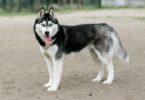What makes a gentle giant the perfect family companion? This question lies at the heart of every decision to welcome a large-breed dog into your home. For centuries, these iconic mountain dogs have captured hearts with their loyalty and heroic history in the Swiss Alps. Originally bred by monks to rescue stranded travelers, their legacy as protective yet affectionate partners continues today.
This guide helps potential owners navigate the journey of finding and raising these remarkable dogs. You'll discover essential details about their care requirements, temperament, and space needs. Whether you're in a suburban house or urban apartment, understanding their adaptability is key to creating a thriving environment.
We break down critical considerations like health screenings, grooming routines, and training strategies. The article also compares standard and miniature varieties, helping you choose the best fit for your lifestyle. With insights from veterinary experts and professional breeders, you'll learn how to identify responsible sources and ask the right questions.
From estimating monthly costs to recognizing quality breeding practices, this resource equips you with actionable knowledge. Designed specifically for U.S. residents, it addresses local regulations and climate considerations. Prepare to make informed decisions while discovering why these devoted companions remain one of America's most cherished breeds.
Exploring the Rich History and Heritage of Saint Bernards
The journey of these iconic canines began over a thousand years ago in Europe's most unforgiving terrain. Their story intertwines with human survival, alpine exploration, and the enduring bond between species.
Origins in the Swiss Alps and Monastic Rescue
In 1050 AD, monks established a hospice at Europe's highest mountain pass to aid stranded travelers. Named after Bernard of Menthon, this refuge became ground zero for developing a specialized rescue breed. The sturdy dogs patrolled snowy routes with small brandy casks and food pouches, locating avalanche victims through scent and intuition.
From Rescue Dogs to Family Guardians
By 1885, the American Kennel Club formally recognized the breed, cementing its transition from working roles. While early lines focused on short coats for snow resistance, long-haired variants emerged through crossbreeding. These gentle giants once herded livestock and pulled carts before becoming household companions.
Historical records highlight legendary rescuer Barry, who saved 40 lives during his service. This legacy of protective instincts now manifests in loyal family bonds. Modern Saint Bernards retain their ancestors' vigilance, making them natural watchdogs despite their relaxed home demeanor.
Essential Health, Care, and Grooming Tips
Maintaining a large breed's well-being requires specialized knowledge of their unique physical needs. Proper management during growth phases and adulthood helps prevent common challenges while promoting longevity.
Understanding Common Health Issues and Preventative Measures
Joint conditions like hip and elbow dysplasia frequently affect this breed due to their size. Regular vet screenings and PennHIP evaluations help detect these issues early. Gastric torsion (bloat) remains a critical concern, requiring immediate veterinary attention if symptoms appear.
Daily monitoring of eating habits and energy levels helps catch problems quickly. Breeders should provide genetic health certificates for eye conditions and heart defects. Preventive care includes scheduled vaccinations and parasite control tailored to thick coats.
Grooming, Nutrition, and Exercise Guidelines
Brushing 2-3 times weekly prevents matting in both smooth and rough coat varieties. During seasonal shedding, daily brushing removes loose fur efficiently. Always check ears weekly for debris and trim nails every 3-4 weeks.
Feed high-quality food formulated for giant breeds, split into two meals to reduce bloat risks. Avoid strenuous exercise until joints fully develop around 2 years. Short walks and swimming offer safe physical activity without joint strain.
Early grooming sessions build positive associations for easier maintenance as adults. Pair brushing with dental chews to support oral health while reinforcing calm behavior.
Finding Trusted Sources for Saint Bernard Puppies
Choosing a reputable breeder sets the foundation for your dog's lifelong health and temperament. Responsible providers prioritize genetic testing and early socialization, creating confident family companions. Valley Ranch Saint Bernards exemplifies this approach, offering health guarantees and 1-month pet insurance for each puppy.
Evaluating Breeder Credibility
Ask for proof of OFA certifications for hip/elbow dysplasia and cardiac exams. Trusted breeders share detailed health histories and weight ranges—standard dogs typically reach 120-180 pounds and stand 26-30 inches tall. Miniature versions exist but aren’t AKC-recognized, making size verification critical for urban living spaces.
Key Questions for Prospective Owners
Inquire about socialization methods and grooming routines started before adoption. Ethical breeders like Valley Ranch use early crate training and expose puppies to varied environments. Always visit facilities to assess cleanliness and observe how dogs interact with people. Check reviews and testimonials to confirm consistent satisfaction with the breeder’s practices.
Make sure contracts include a health guarantee against genetic issues. This attention to detail helps ensure your new pet thrives as a gentle, well-adjusted family member. Informed choices protect both your investment and the dog’s quality of life.
Training and Socialization for a Harmonious Family Companion
How do you channel a giant breed's natural instincts into becoming a well-mannered family member? Structured training transforms their innate gentleness into reliable household behavior. These dogs thrive when taught clear expectations through consistent routines and positive reinforcement.
Early Training Techniques to Prevent Behavioral Issues
Begin obedience lessons at 8-10 weeks old. Use reward-based methods with treats or praise for commands like “sit” and “stay.” Crate training establishes safe boundaries while preventing accidental injuries from their growing size.
Leash training becomes crucial as they approach adult weight. Practice loose-leash walking in quiet areas before advancing to busier environments. Short 10-minute sessions keep their focus sharp without overwhelming them.
Socializing Your Gentle Giant
Their nickname “nanny dogs” reflects their patience with kids. Supervise early interactions, teaching children to avoid pulling ears or tails. Introduce other pets gradually, using baby gates for controlled exposure.
Organize playdates with vaccinated dogs to build social skills. Visit parks, schools, and stores to expose them to many different sights and sounds. Consistent socialization helps these large companions get along well in varied family settings.
Establish a daily routine for feeding and walks. This predictability builds trust and reinforces training lessons. With patience, their calm demeanor shines through, creating lifelong family companions.
Final Reflections on Welcoming a Saint Bernard into Your Life
The decision to share your home with these gentle giants connects you to a legacy shaped by alpine rescues and monastic dedication. With an average lifespan of 8-10 years, Saint Bernards offer families loyal companionship rooted in centuries of protective instincts. Their calm demeanor and ability to get along well in households make them natural guardians, though their size—standing up to 30 inches tall—requires thoughtful space planning.
Proactive care forms the foundation of a thriving partnership. Regular vet checks help address breed-specific health concerns early, while consistent grooming and training maintain their well-being. Moderate exercise tailored to their growth stages prevents joint strain, ensuring they remain active family companions for years.
Prospective owners should evaluate living environments carefully. While standard Saint Bernards suit spacious homes, smaller variants adapt better to urban settings. Always reference breeder health guarantees and socialization practices discussed in this guide.
By honoring their historic role as protectors of travelers and embracing modern care standards, you’ll nurture a bond built on trust. Reach out to ethical breeders who prioritize genetic testing and transparency—your efforts today ensure a joyful journey with these remarkable dogs for years to come.
FAQ
How do I identify a responsible breeder for this breed?
Look for breeders who perform health screenings for hip dysplasia and elbow dysplasia, provide AKC registration details, and allow visits to their facility. Reputable sources prioritize temperament and share veterinary records openly.
What grooming routines are necessary for their coat?
Weekly brushing manages shedding, especially during seasonal changes. Focus on areas like the ears and hindquarters, and trim nails regularly. Bathing every 6–8 weeks helps maintain a clean, healthy double coat.
Are these dogs suitable for homes with small children?
Yes, when properly socialized early, they become gentle family companions. Supervision is advised due to their large size, but their patient nature makes them excellent with kids who respect boundaries.










Leave a Comment